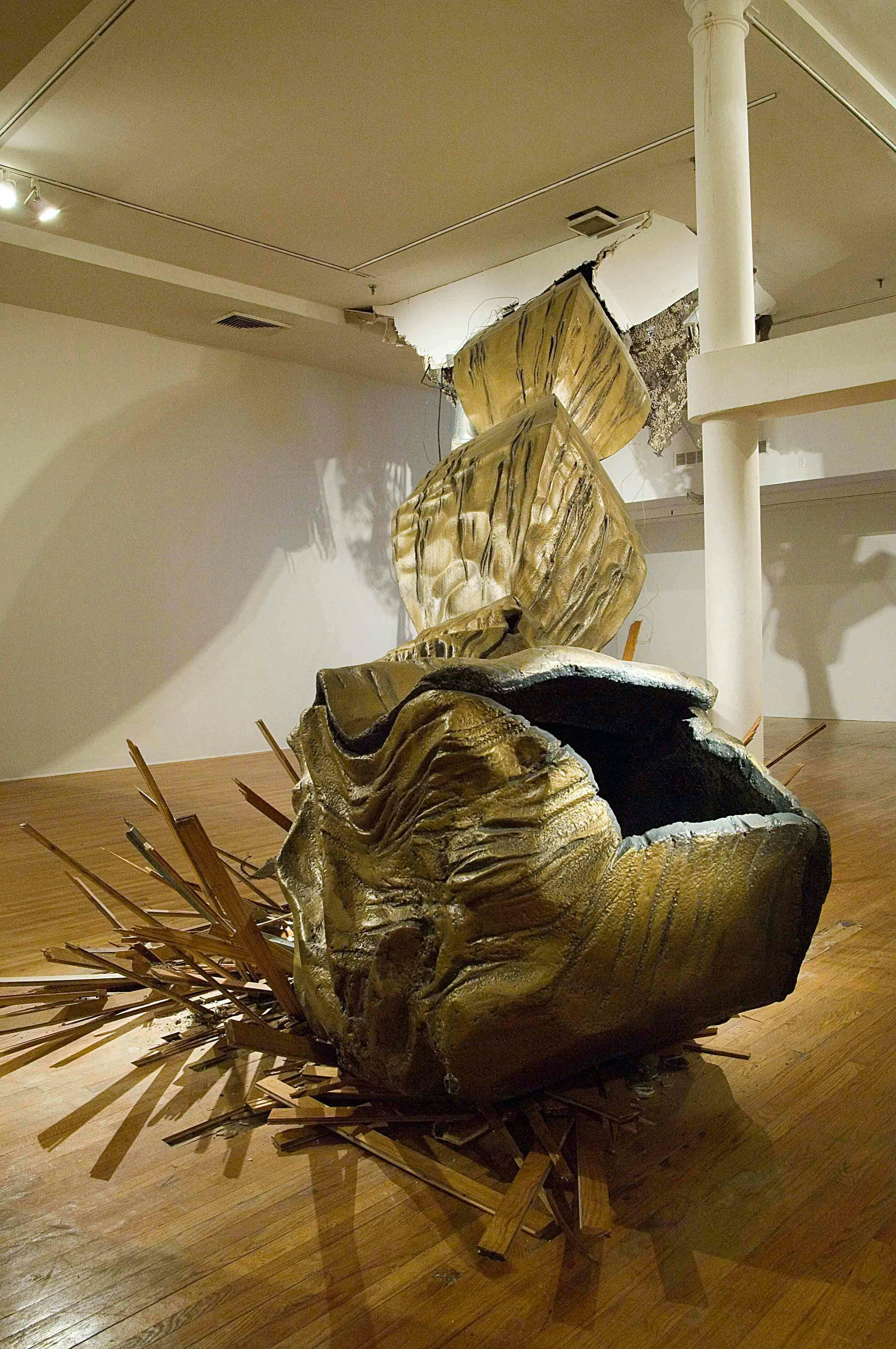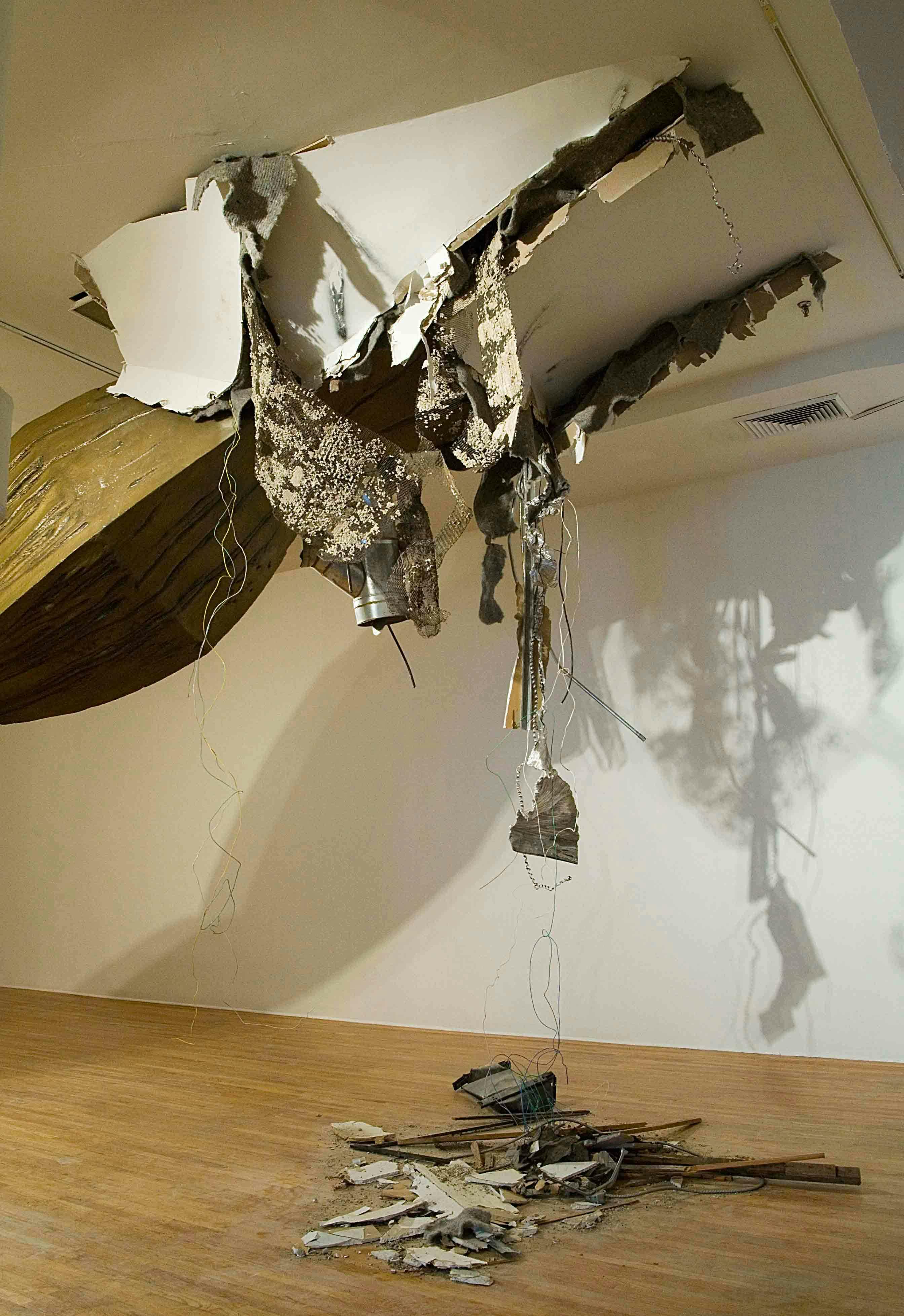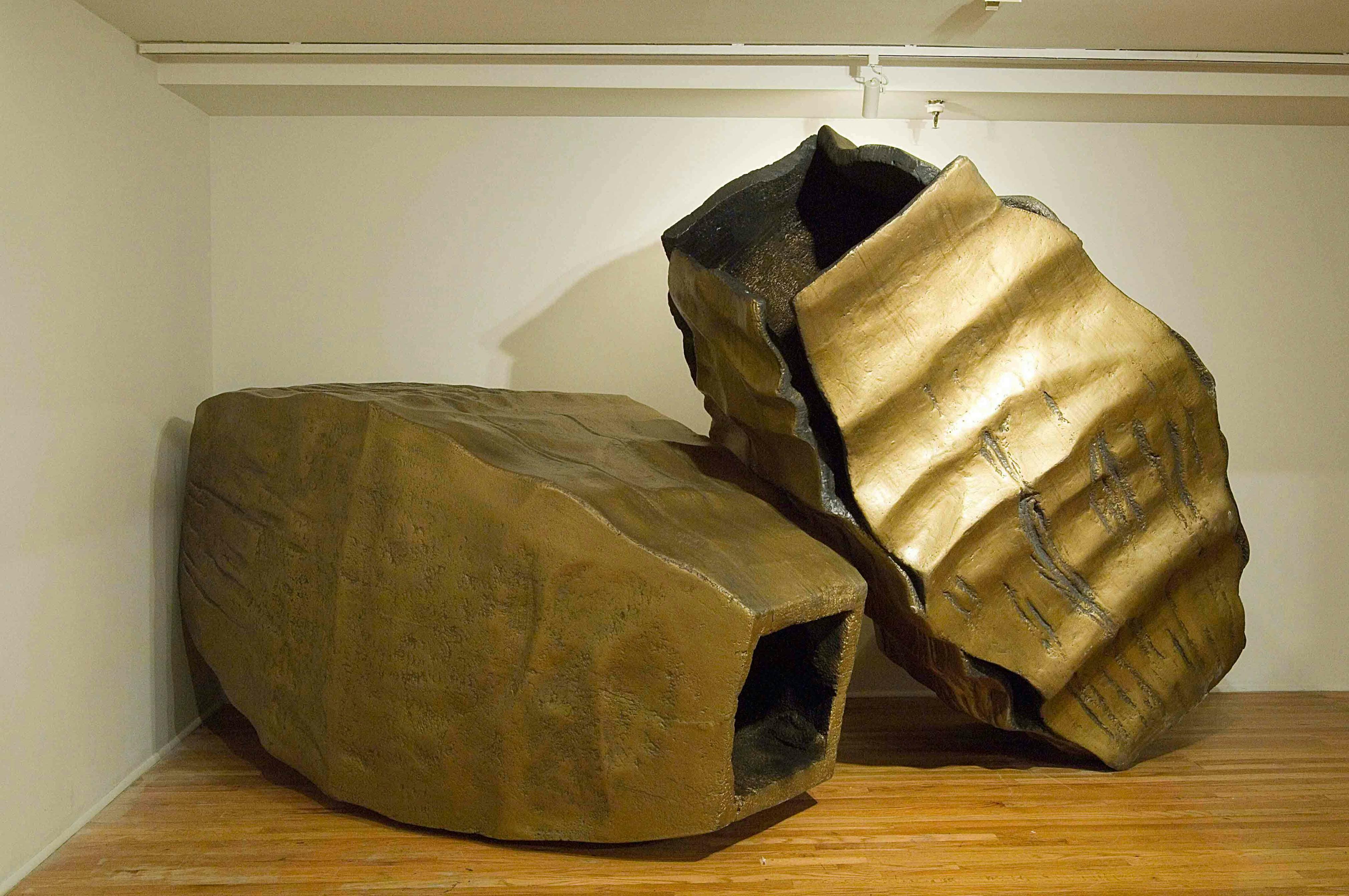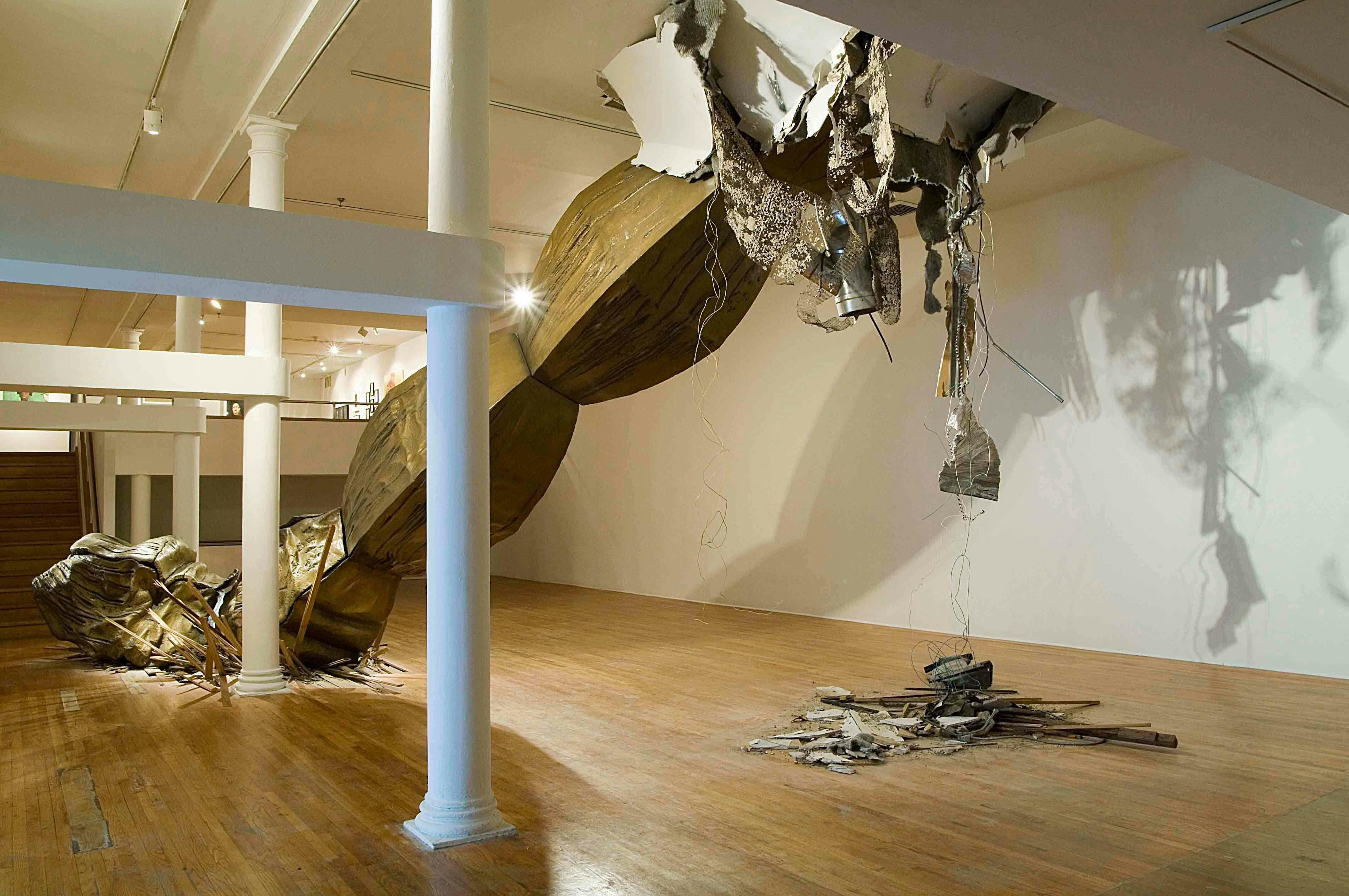Philosophy of Time Travel
04.11-07.01.2007
What if history had a mind of its own, moving from the past, through the present and into the future by choice? A team of five artists explores that idea with a new massive installation, Philosophy of Time Travel at The Studio Museum in Harlem. The installation evokes the work of modernist sculptor Constantin Brancusi, taking his massive 1938 work Endless Column and forcefully and dynamically pushing it through the Studio Museum’s gallery space. The result is a fictional world in which history comes to life, crashes through the exhibition space, and snakes through histories of art and museums.
“Philosophy of Time Travel harnesses Brancusi’s seminal, classic modernist work to challenge the contemporary, as if the sculpture grew beyond its bounds and appeared, by magic or some cryptic science, in the Studio Museum,” says [[insert name, title and affiliation]]. “By being installed here, at a culturally specific art institution, its commentaries on the nature of history and time are also variously applied to the histories and structures of Harlem and African Americans.”
Brancusi’s Endless Column in Târgu Jiu, Romania, is a 100-foot tall series of rhombus-shaped cast-iron chunks that resembles a stylized version of a traditional Romanian funerary pillar. In angling the stick-straight modules through the Studio Museum’s galleries—four of them snake through from floor to ceiling—the artists also recall the imagined flight of Brancusi’s classic Bird in Space series, one of modernism’s great evocations of movement and grace. The installation brings the outside in, the past into the future, and the still into sinuous movement, shattering the walls of the museum space and the present alike.
The installation also includes a video of the sculpture crash-landing in a desert location, as well as the innovative music of Sun Ra, who had a “cosmic philosophy” of his own. The five artists involved in the project, Edgar Arceneaux, Vincent Galen Johnson, Olga Koumoundouros, Rodney McMillian and Matthew Sloly, studied together at CalArts and have been involved in a wide range of solo and group exhibitions around the world. They work in different media, from sculpture to photography to digital technology, but often find common ground. In this case, the 2001 cult film Donnie Darko, which features a book called Philosophy of Time Travel got them talking about how art history bends back on itself.
Philosophy of Time Travel
04.11-07.01.2007
What if history had a mind of its own, moving from the past, through the present and into the future by choice? A team of five artists explores that idea with a new massive installation, Philosophy of Time Travel at The Studio Museum in Harlem. The installation evokes the work of modernist sculptor Constantin Brancusi, taking his massive 1938 work Endless Column and forcefully and dynamically pushing it through the Studio Museum’s gallery space. The result is a fictional world in which history comes to life, crashes through the exhibition space, and snakes through histories of art and museums.
“Philosophy of Time Travel harnesses Brancusi’s seminal, classic modernist work to challenge the contemporary, as if the sculpture grew beyond its bounds and appeared, by magic or some cryptic science, in the Studio Museum,” says [[insert name, title and affiliation]]. “By being installed here, at a culturally specific art institution, its commentaries on the nature of history and time are also variously applied to the histories and structures of Harlem and African Americans.”
Brancusi’s Endless Column in Târgu Jiu, Romania, is a 100-foot tall series of rhombus-shaped cast-iron chunks that resembles a stylized version of a traditional Romanian funerary pillar. In angling the stick-straight modules through the Studio Museum’s galleries—four of them snake through from floor to ceiling—the artists also recall the imagined flight of Brancusi’s classic Bird in Space series, one of modernism’s great evocations of movement and grace. The installation brings the outside in, the past into the future, and the still into sinuous movement, shattering the walls of the museum space and the present alike.
The installation also includes a video of the sculpture crash-landing in a desert location, as well as the innovative music of Sun Ra, who had a “cosmic philosophy” of his own. The five artists involved in the project, Edgar Arceneaux, Vincent Galen Johnson, Olga Koumoundouros, Rodney McMillian and Matthew Sloly, studied together at CalArts and have been involved in a wide range of solo and group exhibitions around the world. They work in different media, from sculpture to photography to digital technology, but often find common ground. In this case, the 2001 cult film Donnie Darko, which features a book called Philosophy of Time Travel got them talking about how art history bends back on itself.



